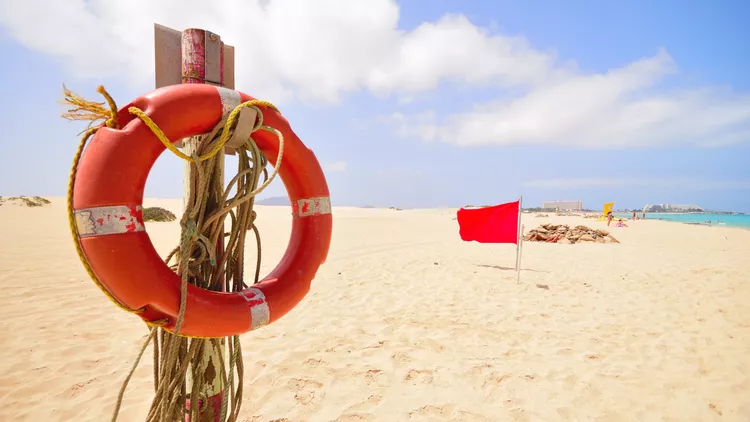Summary
How to Stay Safe While Swimming or Surfing on Bali’s Beaches
Bali’s beaches are renowned for their stunning beauty and exceptional surfing opportunities. Each year, hundreds of thousands of tourists flock to Bali to swim, bodyboard, or surf. However, while Bali is a popular destination, visitors are not immune to safety risks such as sunburn, dangerous undercurrents, and the rare possibility of tsunamis.
To fully enjoy the vibrant beach scene in Bali, tourists must take certain precautions to avoid potential hazards.
Don’t Swim on Beaches Where Red Flags Fly
Parts of Bali’s coastline, particularly from Kuta to Canggu, can have perilous rip tides and undertows. Red flags are displayed on particularly dangerous beaches during specific times. If you encounter a red flag, it’s crucial not to swim there, as the currents can pull you out to sea swiftly, leaving little time for rescue.
Moreover, lifeguards are scarce in Bali. However, some beaches do have lifeguards, indicated by flags featuring yellow and red markings. These beaches generally offer a safer swimming experience, as do those without any flag warnings.
Read the Tsunami Information in Your Hotel
Tsunamis present an unpredictable danger, often caused by underwater earthquakes, and they can reach shores in mere moments. Bali lies in an earthquake-prone region, so awareness of tsunami protocols is crucial.
The main tourist hotspots in Bali—such as Jimbaran Bay, Legian, Kuta, Sanur, and Nusa Dua—are located in low-lying areas susceptible to flooding in the event of a tsunami. To enhance safety, a Tsunami Ready system has been established, with compliant hotels implementing rigorous alarm and evacuation procedures.
- Learn more about Tsunami Ready Hotels in Indonesia.
- Access evacuation maps and information for Bali.
When selecting accommodation, seek a location at least 150 feet above sea level and 2 miles inland. If a tsunami seems imminent, move inland or seek refuge on the highest available structure.
Wear Plenty of Sunscreen
Sunburn can quickly ruin an otherwise enjoyable Bali vacation. Applying high-SPF sunscreen is essential to prevent UV damage to your skin.
In tropical locations like Bali, the proximity to the equator means that sunlight is more intense, leading to a higher risk of sunburn. Therefore, it’s advisable to use sunscreen with an SPF of at least 40, regardless of the season.
Additionally, consider wearing clothing that has been specially treated to be UV-resistant.
If you wish to reduce sunscreen use or run out, minimizing sun exposure is vital. Seek shade between 10 am and 3 pm when the sun is at its highest. Remember, UV rays can also reflect off surfaces like sand and water, increasing the risk of sunburn.





